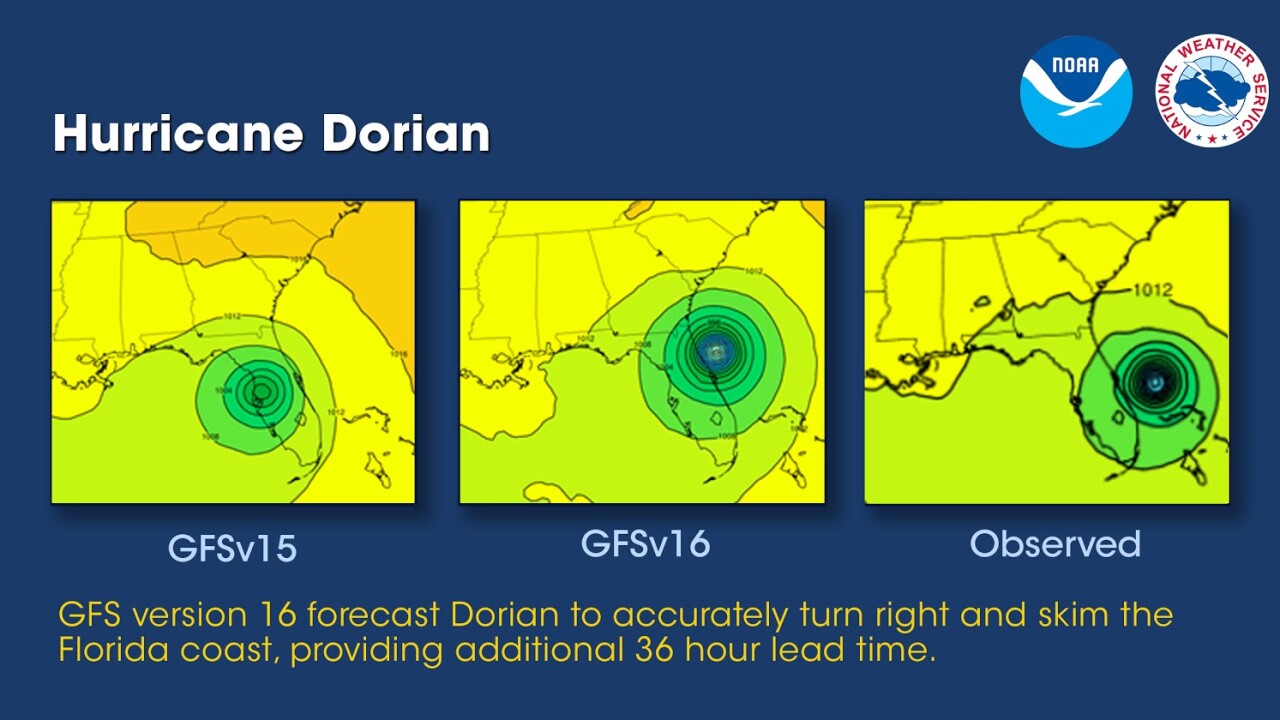The debate between the GFS and the European forecast model and which one is better has gone on for years. While no single model has a clear advantage over the other, the GFS is receiving a big upgrade that will only improve its skill when it comes to global weather forecasting. NOAA is upgrading the GFS model by making several improvements to its current structure and adding some other enhancements.
The most significant improvement will be the overall resolution of the model, by doubling the number of vertical levels up to 127 from its current 64. Horizontal resolution is now down to 10 km vs the current 13 km. For reference, the European model runs at 9km horizontal resolution. The lower the number, the higher the resolution of the model. Also, there will be improvements to the atmospheric physics that deal with precipitation. This will allow for more accurate forecasting of placement as well as forecast accumulation. Another improvement is to couple the GFS with the global wave model called Wave Watch III. This will extend the wave forecast from 10 days out to 16. It will also help with the prediction of waves caused by the atmosphere itself.
The model underwent testing during the 2019 Hurricane season and a portion of 2018. One thing that was noticed was increased skill in forecasting hurricane development, in particular the lead time for the development of tropical cyclones also known as tropical cyclone genesis. Another improvement was the prediction of extreme rainfall events, many of which occur here in southwest Florida. During the testing period in 2019, it was determined that the new GFSv16 upgrade correctly forecast Hurricane Dorian's eventual turn up the Florida East Coast accurately while it was over the Bahamas. The current GFS (before the upgrade) plowed the storm directly into the Space Coast.
It is improvements like this that will increase the accuracy of forecasts, potentially saving thousands of lives and billions of dollars.
FOX 4 CHIEF METEOROLOGIST DEREK BEASLEY


